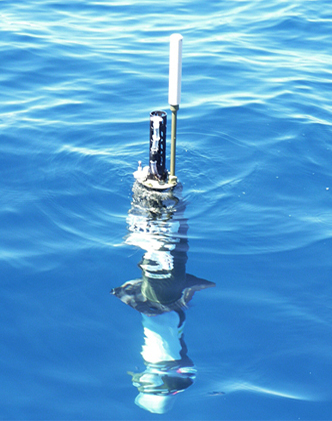The early appearance of nitrate in December appears to have been the driving force for favorable conditions for algal blooms in the Mediterranean, a new study indicates. To better understand the role of nutrients’ availability to enable the growth of phytoplankton in temperate seas, D’Ortenzio et al. installed nitrate concentration sensors on two profiling floats in the northwestern Mediterranean basin in summer 2011. Each spring, the phytoplankton in this basin rapidly grow to form a bloom that blankets the surface and contributes to the transport of carbon from the atmosphere to the deep ocean. Scientists are still unsure exactly what produces the conditions for these blooms, but they know that the availability of nutrients, induced by large-scale circulation in the oceans, during the winter is a factor.
The researchers collected nitrate concentrations at different depths (from the surface to 1000 meters) from the two sensors, which were recovered 393 days and 2 years after deployment, respectively. Combining their data with concurrent satellite information on chlorophyll concentrations, the researchers discovered that nitrate first appeared in high concentrations during December 2012 and 2013 and lasted through February, whereas high chlorophyll levels were only observed in March. From this, the researchers concluded that the early appearance of nitrate in December was mainly driven by large-scale oceanographic circulation. (Geophysical Research Letters, doi:10.1002/2014GL061020, 2014)
—Jessica Orwig, Writer
Citation: Orwig, J. (2014), Circulation a key factor in Mediterranean algal growth, Eos Trans. AGU, 95(51), 492, doi:10.1002/2014EO510007.
© 2014. American Geophysical Union. All rights reserved.
© 2014. American Geophysical Union. All rights reserved.

